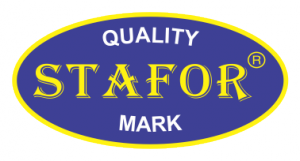THERMOPAINT – liquid heat insulation
There can be observed more and more new products in the market under the title “thermo paint”. Most often it is a paint on polymer binder base, where ceramic or glass microspheres are used as a filler. Producers and distributors of these products often points at their miracle features, sometimes also position as an alternative for all other heat insulation materials. These statements are false. Thermo paint cannot be universal material of thermal insulation due to its physical features and therefore it cannot fully replace foam polystyrene, mineral wool or other materials. However; there are cases when their usage is economically and technologically justified.They are often used in places where traditional insulation materials are difficult or impossible to use. Below there are mentioned several application areas of thermal colours:
Energetics.
Protection of metal surfaces – hot and cold water supply pipes, locking accessories, conditioning and ventilation system’s air ducts, tanks and reservoirs, thermal insulation of water tanks and heating boilers.Transport.
Outstandingly thin thermal insulation for trailers, refrigerators, cars, boats, metal garages.Building.
Metal roof covering protection from overheating, corrosion and maintaining the heat. Insulation of metal hangars, liquidation of coldness „bridges” in building construction places, where it is impossible or economically not justified to perform the works using classical insulating materials. Avoiding originating of condensate, improving sound isolation. Treatment of seams of panel buildings. If insulation of indoors is done, it’s effective to use it on the walls behind heating radiators, for treating the window boxes and doorways, insulating loggias and balconies etc.Application examples mentioned below highlight the strong points of the thermal paint:
- Outstandingly thin coating layer.
- No seams or other joints when applied.
- Easy, fast and technological application.
- Coating flexibility, resistance against deformations caused by temperature.
- Objects treatment of complicated forms.
- Covering serves also as a hydro insulating membrane.
- Protects metal from corrosion.
- High ratio of heat reflection (“heat mirror” effect).
Therefore, thermal colours should be used where their unique features are necessary. This is the case when one should less listen to the advertisements and more take into account material features and proper guidelines of its usage. Consultation of specialist will be just in place. Good luck!
Thermal insulation for pipelines.
| Longevity | Ecology | Resistance against atmospheric effects | Maintenance | Aesthetics | |
| Mineral wool and polyurethane foam | Insulation repair and renewing is necessary during normative serving | Environmentally unsafe | Additional protection is necessary | In case of repair it’s necessary to replace big amount with thermal insulation material | Visually, rapidly aging |
| Thermo paint STAFOR | Maintenance or service is not necessary | Eco-friendly | Additional protection is not necessary | In case of damage only small area of coverage is renewed | Long persistence |
The strengths of thermal insulating thermo paint STAFOR:
- Lets solving the problem of thermal insulation and anticorrosion protection high-tech and complex.
- Eases exploitation of pipelines and valves, their technical servicing, since it’s possible to localize leak fast.
- Prolongs the life time of protected pipelines.
- Thermo paint ensures aesthetic covering and it is ecologically pure.
- Multiple cut of expenditures related to prophylactic and renewing thermal insulation repair works.
- Not binding for vandals.
- If necessary, small damages of insulating layer (scratches, splittings) is easy to renew with the help of a brush.
Frame-monolithic building insulation.
Problem – freezing-through of the entresols panel ends. Panel plates can freeze-through even in 3m of building’s depth, more than 50% of the heat is lost through it and the adjacent wall is damaged.
Solution – Apply thermally insulating thermo paint STAFOR on the panel ends of entresols by covering also the masonry part, one brick above and another under the panel.
Fight with icicles.
Problem – The cover of sloping metal roof is independently heated with the heat released from the attic and the existing pipelines. The roof overhang is heated with upward heat released from the facade. The boundary layer of the snow melts due to the heating of roof coverage and additional heat released from facade – conditions ensuring formation of icicles and icing.Solution – It’s necessary to fight the reason why icicles form not with the icicles themselves. Attic should be put in order according to the designed solutions, hence, attic should be cold (necessary to renew the natural ventilation), heat loss in attic should be diminished. It’s necessary to check the insulation of attic coverage.
Heating and water pipes, valves and other elements are necessary to insulate with STAFOR thermo paint.
On the roof overhang (till facade’s part), from top (at least 1m) and bottom it’s necessary to apply thermo paint. For maximal effect it’s recommended to treat the whole area of roof metal coverage from the attic side.
On the roof overhang (till facade’s part), from top (at least 1m) and bottom it’s necessary to apply thermo paint. For maximal effect it’s recommended to treat the whole area of roof metal coverage from the attic side.




